© Copyright 2020 Foshan Membrane Technology Co., Ltd. All rights reserved. Sitemap
UltraViolet Nanoimprint lithography (UV-NIL) is a cost-effective technology that produces micro and nanometer scale patterns with high resolution and throughput. This technique involves pressing a template into a liquid imprint resin and curing it using UV light to create nanoscale patterns.
This article outlines some basic guidelines for identifying which resin characteristics are important for a specific application.
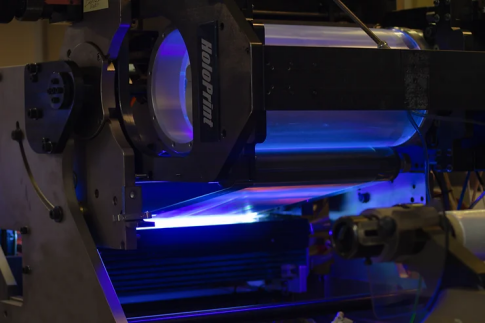
Before outlining the available resins, it is beneficial to define some key terms, as illustrated in Figure 1.
The imprint process is intended to produce numerous identical replicas of a master. However, the master is usually created using a complex and time-consuming procedure, necessitating careful preservation of the master.
The nanoimprinting process typically comprises a two-step approach:
1.Creating a template (also called a stamp or a mold) from the master
2.Using the template to imprint the replicas

Figure 1. Definition of terms used for NIL. Image Credit: Stensborg
The final product of the NIL process is resin-imprinted structures on a carrier substrate. The selection of resin and substrate primarily depends on the intended use of the product.
For example, factors such as rigidity, flexibility, transparency, opacity, and usage environment dictate what type of resin should be used for a specific product. For an optical application, a key design parameter is also the refractive index. Regulatory requirements can also have an impact on the choice of resin.
While it is not feasible to provide a comprehensive overview of all potential resins and substrates for every application in this article, Stensborg has extensive experience in assisting clients with resin selection. Customers are encouraged to contact Stensborg to discuss their specific application requirements.
Curing Method
UV-curable resins, particularly acrylate-based resins, are often preferred for low-cost, high-volume manufacturing using roll-to-roll and roll-to-plate processes. The rolling process is significantly faster than other curing methods.
Feature Size
The optimal resin viscosity for a product is determined by the feature sizes, and the resin must fill the template cavities without trapping air. Low-viscosity resins are ideal for smaller structures, while high-viscosity resins are suitable for larger structures.
A general rule of thumb is to use high-viscosity resins for structures larger than 1 micron and low-viscosity resins for structures smaller than 1 micron.
However, low-viscosity resins result in thinner layers than high-viscosity resins, so deep cavities necessitate higher-viscosity resins, as depicted in Figure 2.
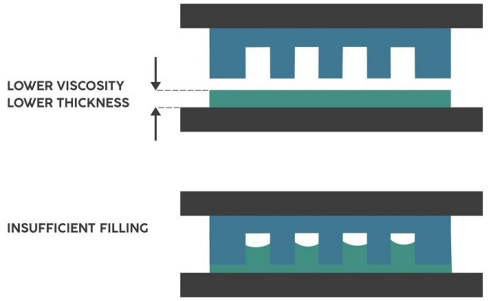
Figure 2. Example of insufficient filling with low viscosity resin. Image Credit: Stensborg
The substrate is an integral part of the final product, and its characteristics depend on the product's intended use. The substrate can be rigid or flexible, transparent or opaque.
The critical criterion for the replica resin is its adhesion to the substrate. The substrate material can range from paper to polymers such as PVC, PET, or PC.
Considerations for selecting replica resin are summarized in Figure 3. To start a resin project and demonstrate the feasibility of nano-imprinting structures, Stensborg recommends two general-purpose resins; X29 and X166b.
Both resins are UV-curable acrylates that bond well to common substrate materials like PET and PVC. X166b has a low viscosity of around 25 mPa*s, while X29 has a medium viscosity of approximately 300 mPa*s.
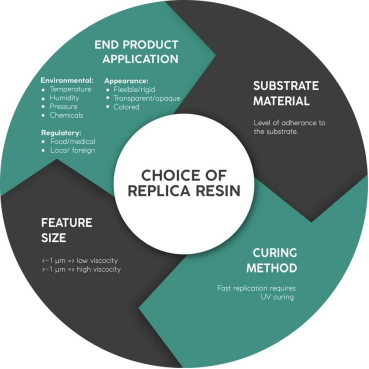
Figure 3. Considerations for choice of replica resin. Image Credit: Stensborg
This section explains that unlike the replica resin material, which is determined by the product application, the choice of template material is influenced by various process parameters and characteristics of the NIL process. Figure 4 provides a summary of these parameters.
Production Volume
The first factor to consider when selecting a template material is the number of replicas needed from the same template. The template material must be sturdy enough to produce the required number of replicas.
For prototyping and proof of concept, typically, 10-50 replicas are sufficient, but for mass production, 1000-10,000 units can be made from the same template.
At Stensborg, the acrylate-based, UV-cured templates have been used for over 50,000 replications in certain cases. However, the durability of the template for a specific application is influenced by various factors, which are outlined below.
Replica Resin
To ensure successful replication, it is essential that the template material does not react chemically with the replica resin and can be easily released from the cured replica. For this reason, the template and replica materials should not be the same.
Curing Method
As the suggested curing method for the replicas uses UV light, it is also feasible to use UV-curing of the template. A cured template resin and substrate (if present) must be both transparent for UV light at the curing wavelength.
Template Substrate
If the template is nano-imprinted on a flexible substrate, the resin template must adhere well to the substrate to withstand the required number of replications without detaching. In cases where the template resin does not adhere well to the base substrate, some substrates may be primed with an adhesion promoter.
Similar to the selection of replica resin, the viscosity of the template resin is determined by the feature sizes. Low-viscosity resins are used for small structures, while medium-viscosity resins are suitable for larger systems.
It is essential to consider how the template resin interacts with the master, which may consist of metals, polymers, or SiO2/quartz. The template resin should not chemically react or damage the master and should be easy to release from the master after curing.
l Summary - Template Resin
Stensborg has developed two template resins - DM56 and DM57 - that have been extensively tested and proven effective for numerous applications. These UV-curable acrylates adhere well to common substrate materials such as PET, PVC, and PC.
The main difference between DM56 and DM57 is their viscosity, with DM56 having a low viscosity and DM57 having a medium viscosity.
Templates made from Stensborg resins are known for their durability.
PDMS is a commonly used template material due to its UV-transparency and elastomeric properties. However, there are several issues with PDMS. The lifetime of the mold is often limited to a few tens of imprints as the adhesion between the stamp and replica resin increases quickly with the number of imprints.
Using PDMS as a template material can also alter the surface properties of the replica, preventing metal or organic layers from adhering to it.
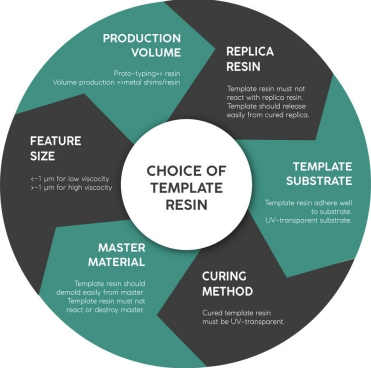
Figure 4. Considerations for choice of template resin. Image Credit: Stensborg
Developing a new roll-to-plate or roll-to-roll nano-imprinting process can be a challenging task, and it may be difficult to know where to start. To address this issue, Stensborg has introduced the Desktop R2P NanoImprinter and a range of UV-curable resins suitable for creating both templates and replicas.
This device and the resins can serve as a useful starting point in the development process and can save both time and effort.
The table below summarizes the range of resins, and additional details, including data sheets Source: Stensborg
Features | Viscosity | Resins for Template | Resins for Replica |
Large (>1 μm) | Medium | DM57 | X29 |
Small (<1 μm) | Low | DM56 | X166b |
Most substrate materials like PC, PET, and PVC adhere well to the resins. Additionally, the DM57 resin can be used to create a template in DM56, which is useful when the original master requires a positive-negative template pair.
The resin formulations are optimized for curing at a wavelength of 395 nm, which corresponds to the Stensborg optical engine. While using Stensborg resins with Stensborg nano-imprinters is recommended, it is not mandatory.
When it comes to full-scale volume production, the development process typically involves three steps, as shown in Figure 5 and described below. The purpose of this process is to mitigate project risks, control development costs, and ensure the project is within budget.
At each step, the development process involves adjusting at least the following three key parameters:
· Light exposure intensity
· Rolling speed
· Force by which the template is pressed into the replica resin
The Stensborg Desktop R2P NanoImprinter allows control of all three parameters.
In the first step, Stensborg recommends using the Stensborg Desktop R2P NanoImprinter and Stensborg resins for template and replica to develop a rolling process for specific features.
This approach eliminates many of the potential issues outlined in the previous sections by employing reliable consumables from Stensborg. The primary focus is then shifted towards fine-tuning the imprinting process parameters, such as speed and force to achieve satisfactory structural quality and template-resin release parameters.
If the aim is to demonstrate the feasibility of imprinting structures using a rolling technique and the Stensborg resin (e.g., X29, X166b, or others) proves to be effective for the prototypes, it may be feasible to bypass step 2.
In situations where the replica material necessitates specific characteristics, the resin chemistry may require optimization.
In most cases, the Desktop R2P NanoImprinter and the templates produced in Step 1 can be employed, albeit with the substitution of the Stensborg replica resin with an alternative formulation. If necessary, Stensborg is also capable of assisting in the development of a new resin formulation.
Similar to step 1, if a successful fabrication of the structures is accomplished using a rolling imprint method with a particular resin, it may be feasible to disregard step 3.
After the optimization of light intensity, speed, force, and chemistry in the previous development phase, the critical process parameters required for scaling up to volume production can be determined.
During the transition to dedicated volume production using the nano-imprint process, emphasis should be placed on meeting the final application specifications, selecting appropriate mastering technology, producing the template, and selecting the material that meets the expected production volumes, which may range from thousands to billions of replications.
It is important to note that the development steps outlined here are only for the nanoimprinted resin replicas. In most cases, additional post-processing steps, such as adding metal layers and active components, will be needed.
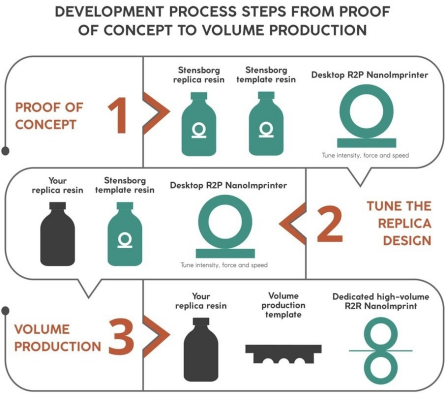
Figure 5. Development process steps from proof of concept to volume production. Image Credit: Stensborg
Article Source:https://www.azonano.com/article.aspx?ArticleID=6443